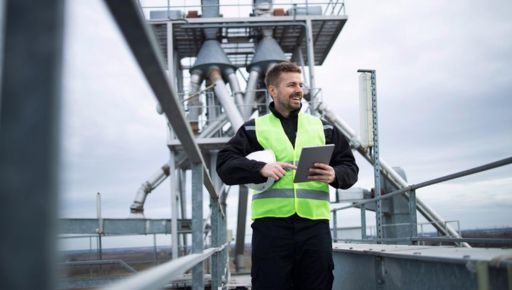Top Tips for Improving Safety and Efficiency in Industrial Facilities

Industrial facilities are dynamic settings that need ongoing maintenance to maintain efficiency and safety. Even little upgrades can make a big difference in operations that include heavy machinery, sophisticated machinery, and fast-paced processes. Facilities can maintain seamless operations while lowering hazards by concentrating on both operational productivity and personnel safety.
Here are some doable suggestions to improve your industrial facility’s productivity and safety.
Conduct Regular Safety Training
Prioritizing employee safety at all times is crucial, and frequent training sessions are necessary to keep everyone aware. Employees must be able to handle dangerous products, operate machinery, and react to emergencies. Basic safety precautions like donning protective gear and adhering to protocols should be covered in training.
Frequent refresher training helps guarantee that workers are ready for any scenario and that safety always comes first. Employees are less likely to make mistakes that could result in accidents when they feel competent and confident.
Implement Preventive Maintenance Programs
A facility that is kept up is safer and more effective. Programs for preventive maintenance assist in spotting possible concerns before they become more significant ones. To monitor for wear and tear, schedule regular inspections of the infrastructure and equipment.
Making minor repairs as soon as possible lowers the chance of accidents brought on by broken machinery and avoids expensive downtime. Additionally, preventive maintenance increases the equipment’s longevity, which lowers long-term costs.
Optimize Equipment Performance
In order to increase output while preserving safety, equipment operation must be done efficiently. Dynamic balancing is a technique that can help minimize vibration in machinery, guaranteeing safe and efficient operation. Facilities can prevent potential breakdowns by monitoring equipment for overheating or other signs of stress using methods like thermal imaging. Investing in these cutting-edge solutions improves productivity and reduces interruptions, resulting in a more dependable workplace.

Improve Facility Layout and Workflow
A facility that is well-organized increases productivity and lowers the risk of accidents. Make sure that workstations, equipment, and storage spaces are appropriately arranged by evaluating your current layout. Workers can move more safely and effectively when there are clear passageways, which also lessen clutter.
To guide traffic and draw attention to dangers, think about using signage and color-coded markings. In addition to saving time, streamlining processes keeps workers engaged and lowers the chance of errors.
Prioritize Ergonomics for Workers
Enhancements in ergonomics have a significant impact on efficiency and injury reduction. To avoid strain and tiredness, give employees movable equipment, such as ergonomic chairs and workbenches with height adjustments. Encourage workers, particularly those in physically demanding jobs, to take brief breaks to stretch and move.
Workplace injuries can also be decreased by providing training on safe lifting practices and good posture. By keeping workers healthier and more engaged, putting their comfort first not only improves safety but also raises productivity.
Monitor and Address Environmental Conditions
Safety and productivity can be impacted by environmental elements like temperature, illumination, and air quality. To avoid mishaps and enable workers to see their tasks clearly, make sure that work areas are well-lit. Because excessive heat or cold can cause discomfort and mistakes, temperature management is also essential in industrial settings.
To preserve healthy air quality and lower exposure to dangerous contaminants, inspect ventilation systems on a regular basis. Establishing a cozy workspace encourages workers to concentrate and give their best effort.

Leverage Technology for Real-Time Monitoring
Real-time monitoring of industrial activities has become easier thanks to technological advancements. Sensors and Internet of Things (IoT) gadgets can monitor the operation of machinery, spot possible risks, and send out maintenance alerts.
For instance, air quality monitors can provide safe working conditions, while vibration sensors can identify problems in machinery before they result in failures. By incorporating these technologies into your facilities, you can make better decisions and respond to possible issues more quickly.
Foster a Culture of Safety and Efficiency
Efficiency and safety go hand in hand, and long-term success depends on cultivating a culture that values both. To ensure that workers feel comfortable reporting risks or making suggestions for enhancements, promote open communication.
Teams who exhibit superior safety procedures or look for methods to increase production should be acknowledged and rewarded. The facility as a whole gains from a more unified and proactive personnel when efficiency and safety are prioritized. Everyone will cooperate to keep the workplace safe and productive if there is a favorable culture. Every action leads to a safer and more effective workplace, from utilizing cutting-edge technologies and real-time monitoring to routine training and preventive maintenance. Facilities can achieve long-term success while maintaining employee safety and seamless operations by giving priority to these tactics and cultivating a culture that prioritizes continual improvemen



